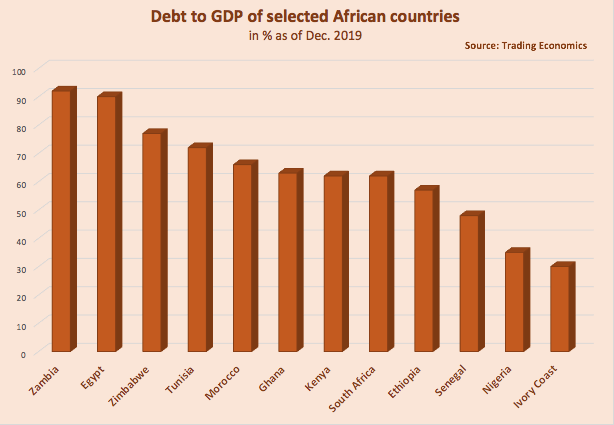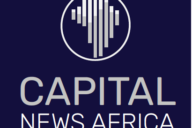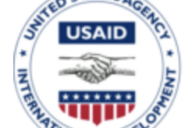Zambia, Ethiopia and some other countries are having difficulty servicing their debts. Some observers deduce a new debt crisis for Africa from this. The situation is worrisome, but Africa is far from a new debt disaster.
It is true: Some African governments are struggling to finance the fight against the covid-19 pandemic and service the debts they made before. But this situation is not only due to the spread of the virus. Even before in 2016, Angola spent nearly six times as much servicing its external debt as it did on public health care.
The tensions bring back memories of the 1980s. Some observers deduce from these difficulties that Africa is facing a new debt crisis. It is the debt in Zambia, Chad and Ethiopia that is of greatest concern in the West. Their debt to GDP ratios are at 92% for Zambia, at 44% for Chad and at 57% for Ethiopia. All figures refer to the end of 2019. And yet the creditors are worried. Even at these levels these countries are struggling to service their debt.
Some countries are still performing well
We agree that the situation is worrisome. But the situation is nowhere near as bad as the great debt crisis that Africa got into 40 years ago. In 1995, the ratio of the external debt to GDP was in Africa at a worrying level of 117%. Now, only three countries suffer from a debt to GDP ratio above 100%. Cape Verde reached 125% at the end of 2019, Angola 111% and Mozambique 109%.
Some economically well-performing countries have debt ratios that are better than in most European countries. In Senegal, the debt ratio is at just 48% and in Nigeria at 35%. Kenya, South Africa and Ghana are at 62 and 63% and Ivory Coast at 30%.
The situation today is a far cry from the great debt crisis that plunged Africa into a major crisis in the early 1980s. Four major events were leading to the debt crisis then:
- An expansionary fiscal policy in many African countries.
- The oil price shocks in 1973-74 and 1979-80.
- A global recession leading to a fall in African export revenues.
- A rise in interest rates as a result of anti-inflationary policies in the donor countries.
The reasons of the debt stress are different
The current situation is worrisome, but the reasons for the difficulties today are completely different from the 1980s:
- A countercyclical government spending to compensate declining private sector spending after the 2007-2008 global financial crisis.
- A rise in development spending, particularly on infrastructure.
- The 2014 sharp fall in commodity prices leading to lower export revenues and a depreciation in exchange rates.
We are in favour of creditors approaching African debtors and accepting a temporary suspension of debt service.
Our proposals for facing the debt stress
But as the reasons for the current debt stress are quite different from the big debt crisis of the 1980s, we believe that smart reforms can improve the situation:
- A better debt management: Authorities should design and implement a clear framework on debt management.
- A policy of productive expenditure: This principle was first formulated by French economist count Henri de Saint-Simon. Debt should be linked to productive expenditure so that investments generate the income that debtors can use to repay their loans.
- A stronger focus on domestic debt: Africans should not rely too much on international finance and develop their domestic capital markets as we outlined before. It is good news that in the past years, countries such as South Africa, Kenya and Nigeria have been issuing long-term bonds for large infrastructure projects such as roads or hospitals.
- A strict maturity and currency congruence: Foreign currency debts should generate foreign currency revenues to enable the repayment of the loan. The maturity of the loan should be congruent to the maturity of the investment project.
- Transparency: Lending rules should be adjusted for a better coordination between lenders and borrowers, more transparency and instruments allowing increased information-sharing. These measures should include traditional borrowers, public and private lenders, as well as new borrowers such as private debt funds. Also, the creation of new institutions as an interregional bank for the relations between Africa, the Mediterranean rim and Europe may help.
Especially when the situation is tense, reliable information is crucial as to whether the tensions can be resolved or whether the situation is turning into a tangible crisis.
We are convinced that a debt crisis can be avoided in Africa if all actors take the right decisions now.









